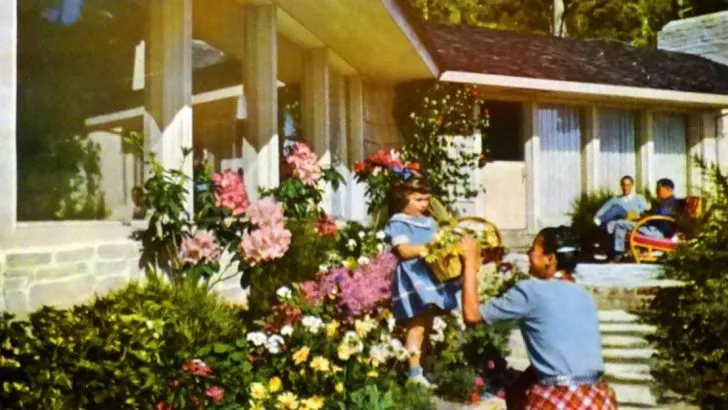The 1950s marked a golden age for gardening, with suburban expansion fueling a surge in well-manicured lawns and lush backyard spaces.
Homeowners embraced elegance and charm, favoring plants that combined beauty with practicality. From colorful florals to sturdy evergreens, these 18 iconic plants became staples in 1950s gardens, defining the era’s classic aesthetic and timeless appeal.
Roses
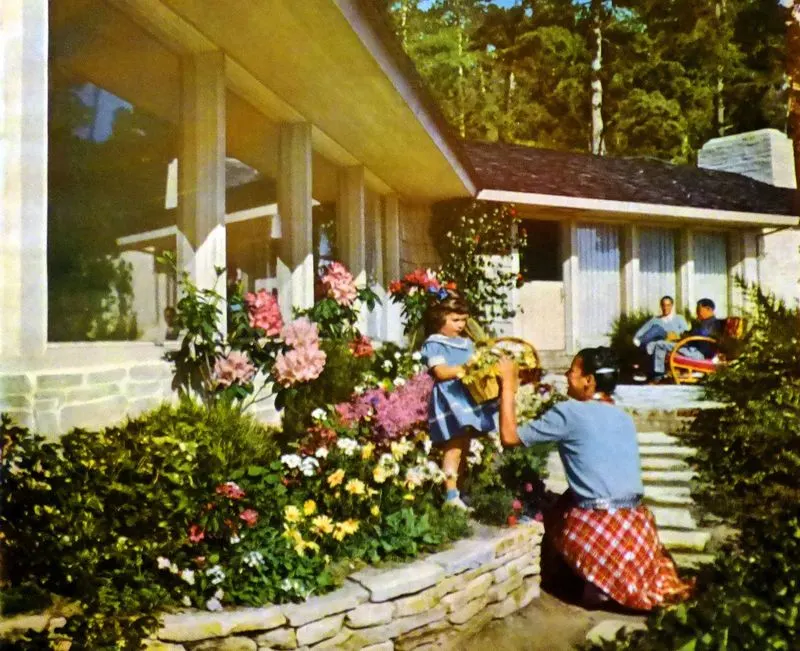
Roses stood as the quintessential symbol of romance and beauty during the 1950s. Their lush blooms and intoxicating fragrance made them a favorite in many gardens. Homeowners often cultivated rose gardens, showcasing varieties ranging from classic reds to delicate pinks. This decade celebrated hybrid teas and floribundas for their continuous flowering. Enthusiasts found joy in pruning, fertilizing, and ensuring these beauties thrived, embodying the era’s optimism. Through careful selection and maintenance, roses became a testament to one’s gardening prowess, their presence gracing countless yards with elegance and charm.
Hydrangeas
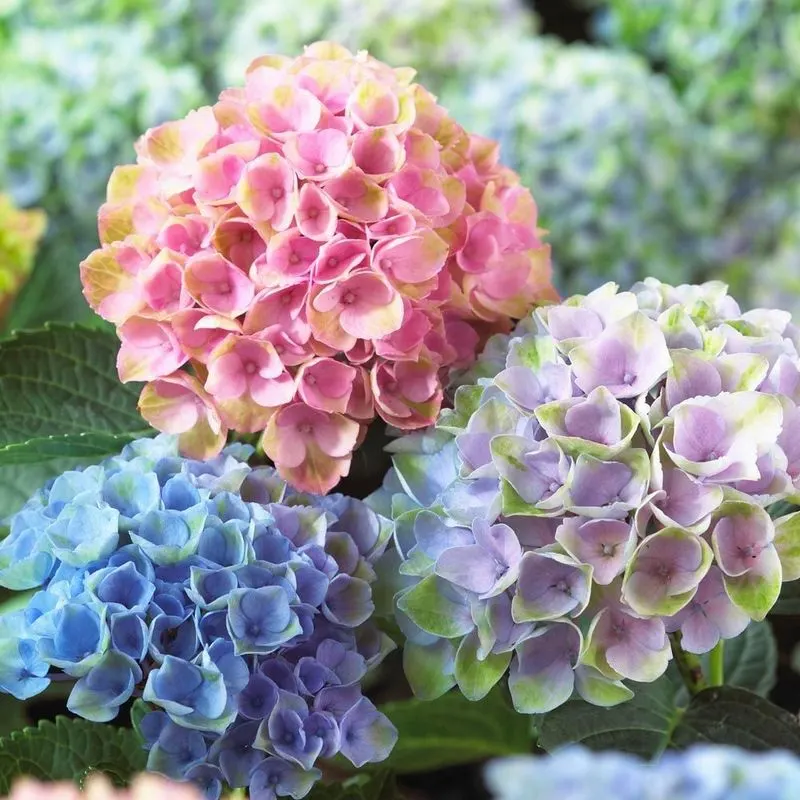
Hydrangeas, with their voluminous blooms, became a staple in 1950s gardens. Known for their ability to change color based on soil pH, these flowers intrigued gardeners. The large, showy clusters offered a bold statement, often planted along garden borders or as focal points. During this period, gardeners experimented with soil amendments to achieve desired hues, adding a personal touch. The adaptability and dramatic presence of hydrangeas made them a beloved choice for those looking to make an impression. Their striking appearance was synonymous with the decade’s spirit of exploration and innovation.
Lilacs
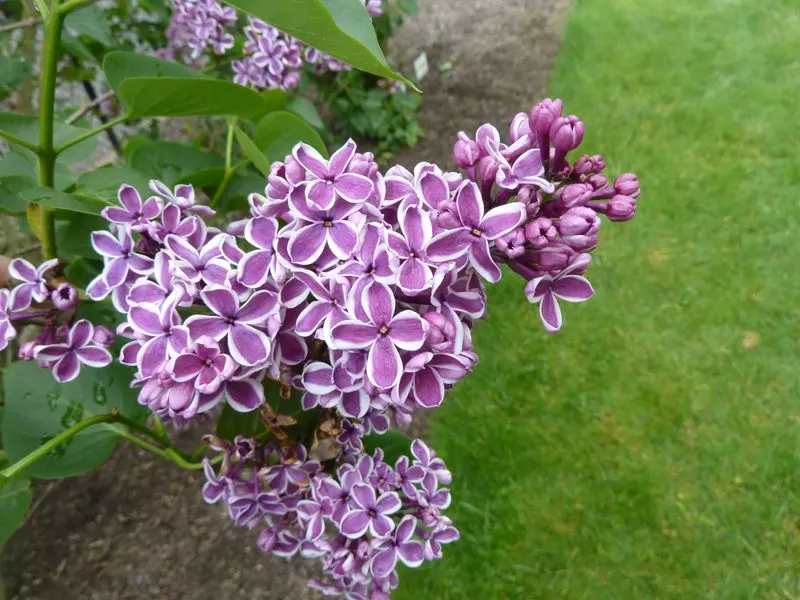
Lilacs brought an air of nostalgia and fragrance to the 1950s garden landscape. Known for their enchanting scent and delicate purple flowers, they were often planted near windows to let their aroma drift indoors. These hardy shrubs heralded the arrival of spring, a season of renewal and growth. The simple pleasure of a lilac’s fragrance was cherished by many, evoking memories of childhood and simpler times. Their resilience and ease of care made lilacs ideal for novice gardeners, capturing the decade’s essence of combining beauty with practicality.
Dahlias
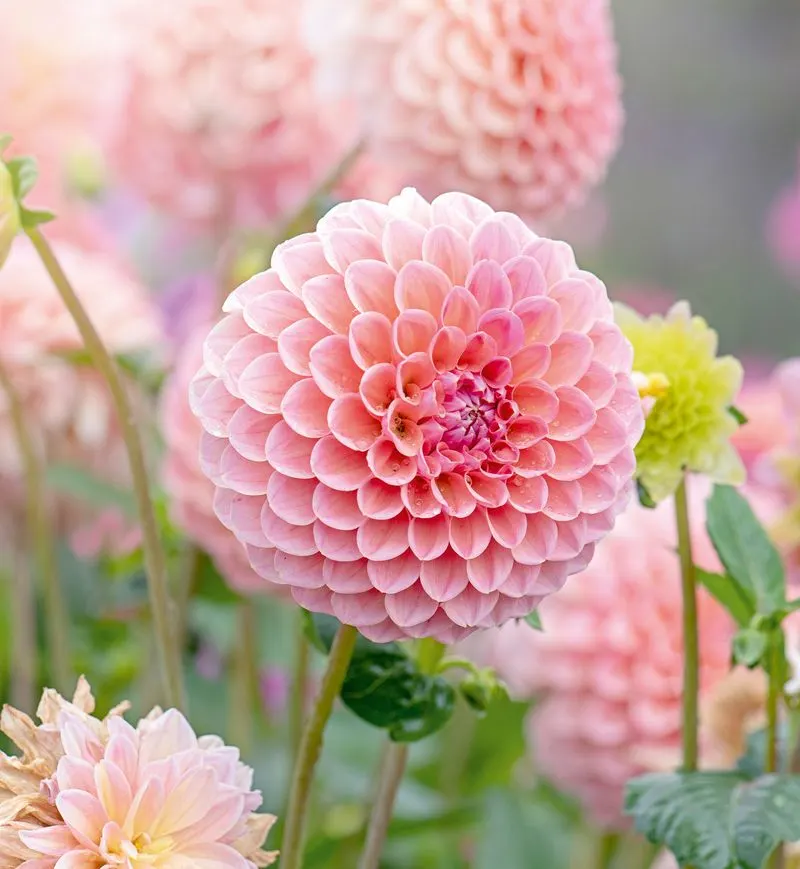
Dahlias captured the imagination of 1950s gardeners with their dazzling array of colors and shapes. These vibrant flowers were perfect for adding drama and excitement to any garden. Their diverse forms, from ball-shaped to spiky blooms, allowed for creative garden designs. Enthusiasts enjoyed experimenting with different varieties, appreciating the way dahlias could transform a simple garden space into a kaleidoscope of color. Cultivating dahlias involved selecting tubers and understanding seasonal care, rewarding gardeners with spectacular floral displays that mirrored the era’s vibrant spirit.
Peonies
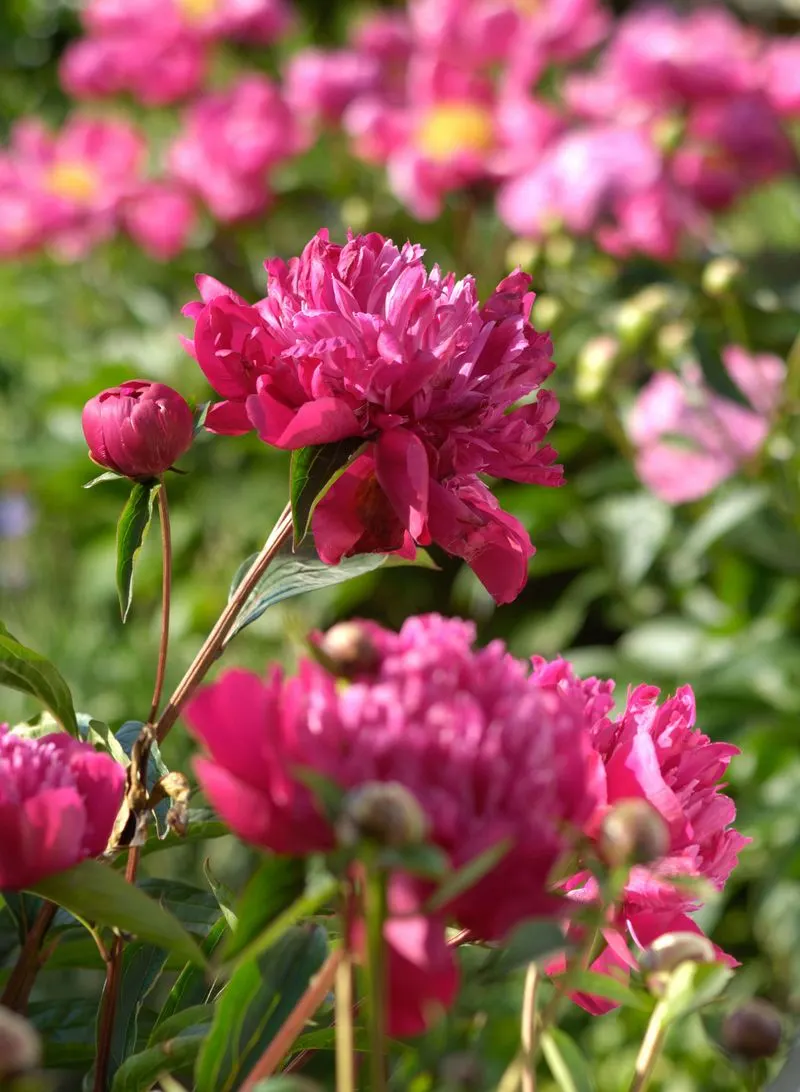
Peonies enchanted 1950s gardeners with their lush, ruffled petals and enchanting fragrance. These perennials graced gardens with elegance, often becoming the centerpiece in floral arrangements. Known for their longevity and ease of care, peonies were prized for their ability to thrive with minimal intervention. Gardeners eagerly awaited their bloom in late spring, a reward for patience and care. The peony’s timeless beauty and opulence made it a cherished addition, embodying the decade’s appreciation for graceful, enduring charm. Their blossoms stood as a testament to gardening success and natural elegance.
Tulips
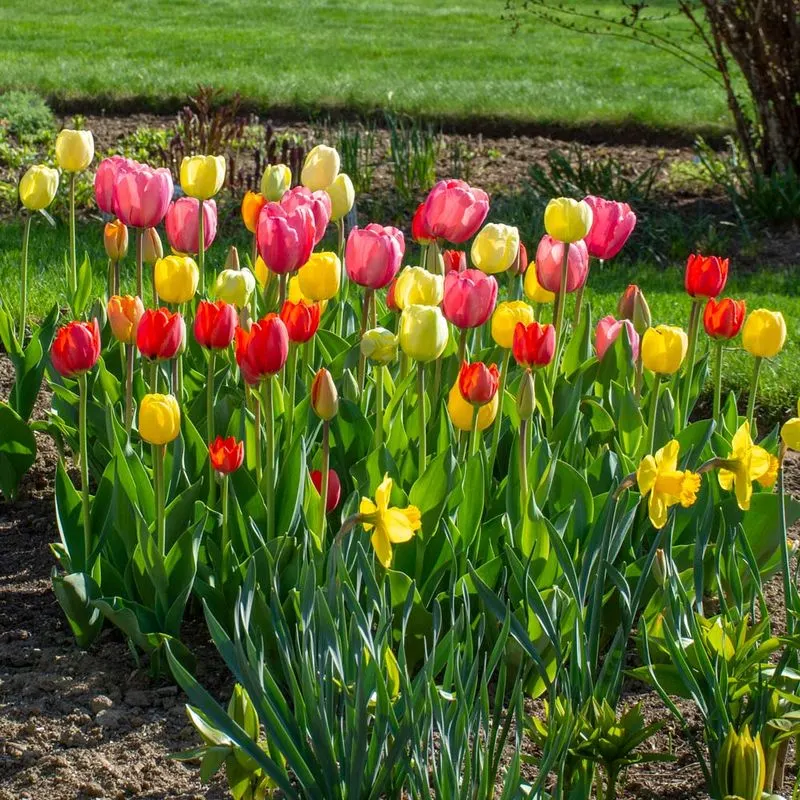
Tulips brought a burst of color to 1950s gardens, symbolizing cheer and simplicity. These spring-blooming bulbs were planted in groups, creating swathes of vibrant hues that heralded the season. Their straightforward cultivation made them a popular choice among gardeners seeking reliable beauty. The diverse range of colors and forms allowed for personalized garden expressions. Tulips’ ephemeral nature added to their charm, with each bloom marking a fleeting moment of splendor. Their presence in gardens was a nod to traditional values, celebrating the simple pleasures and beauty of nature.
Azaleas
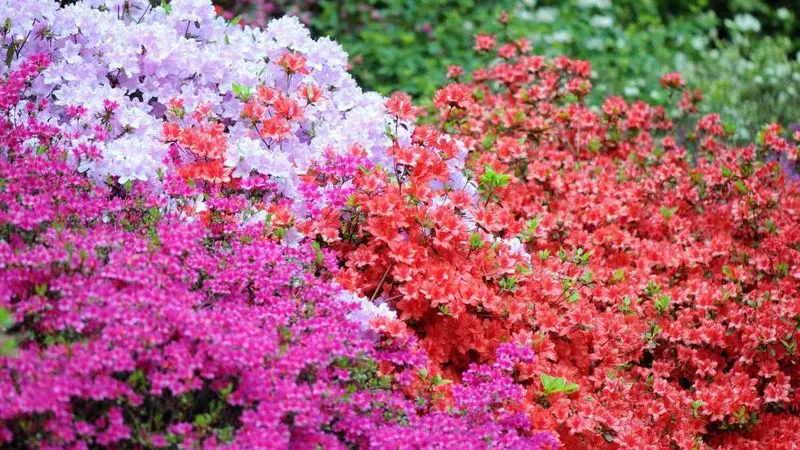
Azaleas, with their stunning display of spring blooms, were a hallmark of 1950s garden design. These shrubs were favored for their vibrant colors and ability to thrive in shaded areas. Often planted as foundation plants or in woodland gardens, azaleas added depth and texture to landscapes. Gardeners appreciated their low-maintenance nature, making them an ideal choice for busy households. The variety of shades, from soft pastels to vivid hues, allowed for creative landscaping. Azaleas encapsulated the era’s desire for effortless beauty and harmonious garden compositions.
Iris
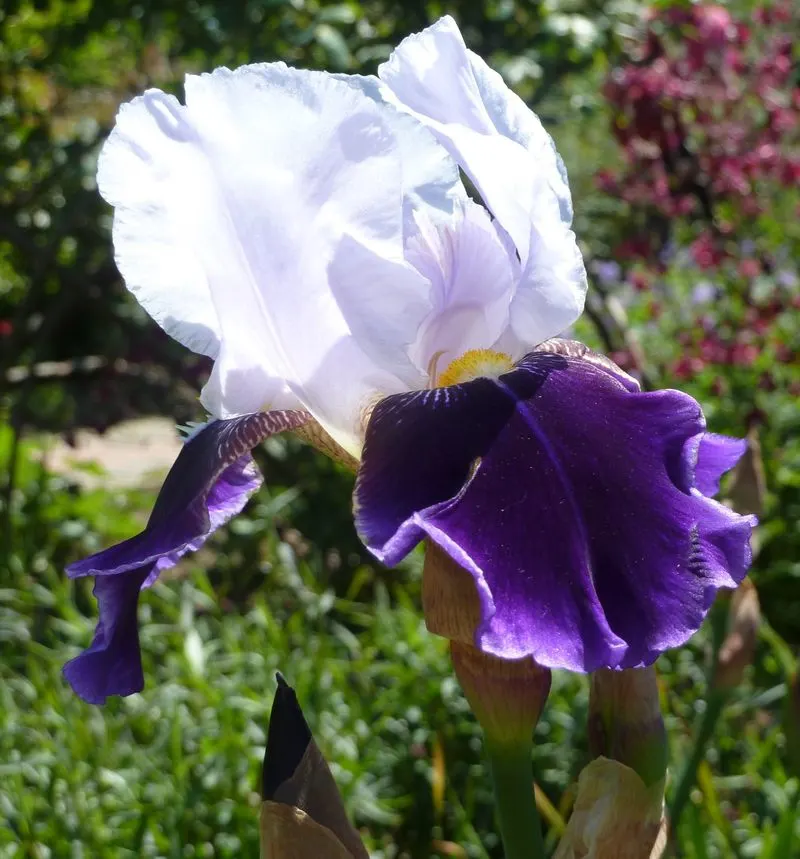
Irises brought elegance and diversity to 1950s gardens with their unique blossoms and intricate patterns. Known for their sword-like leaves and striking flowers, they were often used to accentuate borders or pathways. The variety of colors and forms available made irises a versatile choice for creative garden design. Caring for irises involved understanding their needs for well-drained soil and sun exposure. Their blooms, reminiscent of exotic landscapes, added a touch of sophistication and mystery. In many gardens, irises symbolized a connection with nature’s artistry and the decade’s flair for dramatic aesthetics.
Magnolias
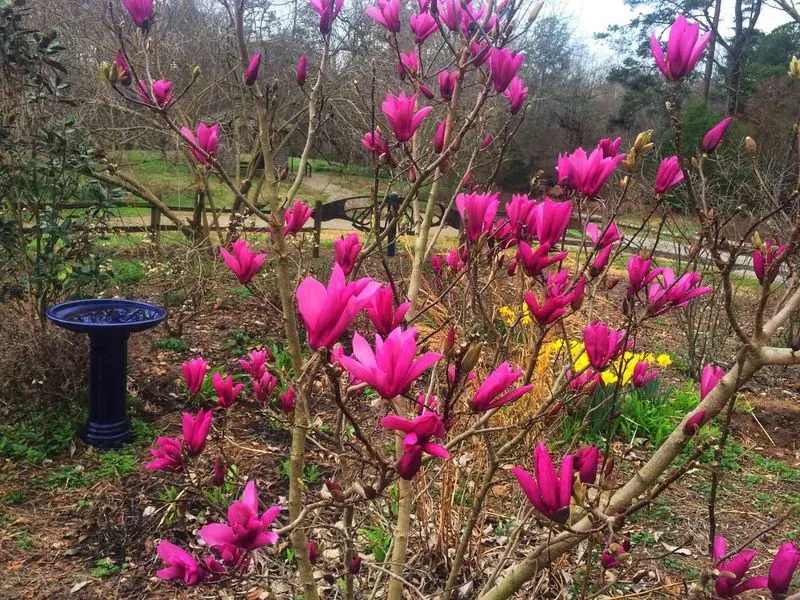
Magnolias stood as majestic symbols of southern charm in 1950s gardens. Their large, fragrant flowers and glossy leaves made them a focal point in many landscapes. Often used as ornamental trees, magnolias were celebrated for their ability to thrive in various climates. The blossoms, appearing in spring, offered a spectacular display, attracting attention and admiration. Gardeners valued magnolias for their resilience and minimal maintenance needs. These trees reflected the decade’s fascination with grandeur and elegance, adding a touch of sophistication to any garden setting, ensuring a stunning visual impact.
Hostas
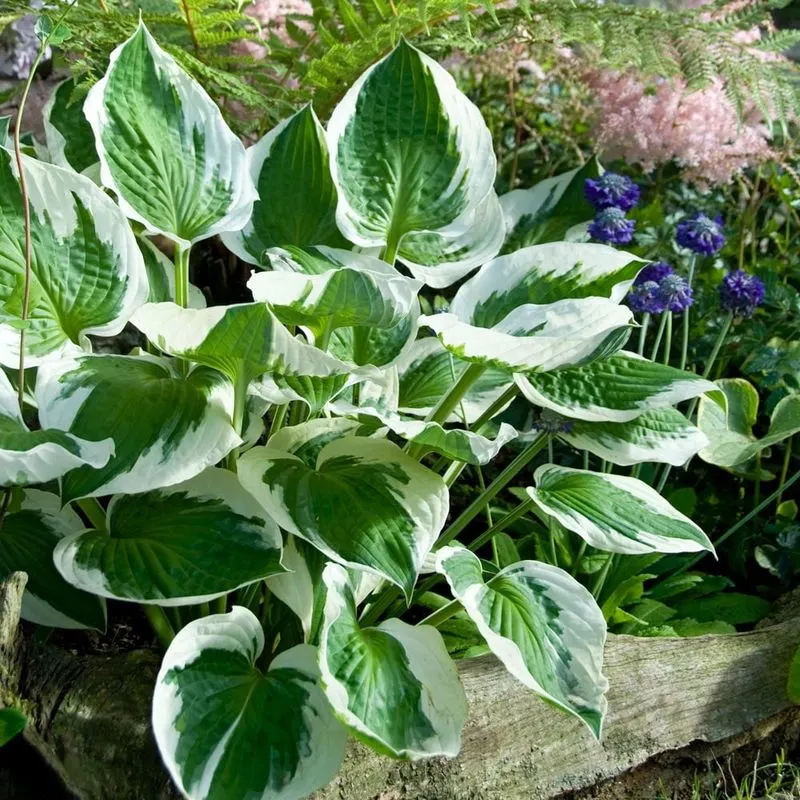
Hostas became a favorite in shaded 1950s gardens, known for their lush foliage and ease of care. These perennials provided texture and form, thriving in areas where other plants struggled. Their broad leaves, available in various shades and patterns, made hostas ideal for adding visual interest to garden borders. Gardeners appreciated their low-maintenance nature and ability to complement more vibrant blooms. Hostas symbolized adaptability, a key trait during a decade of change and innovation. Their presence in gardens offered a sense of tranquility, enhancing the overall landscape with their understated elegance.
Camellias
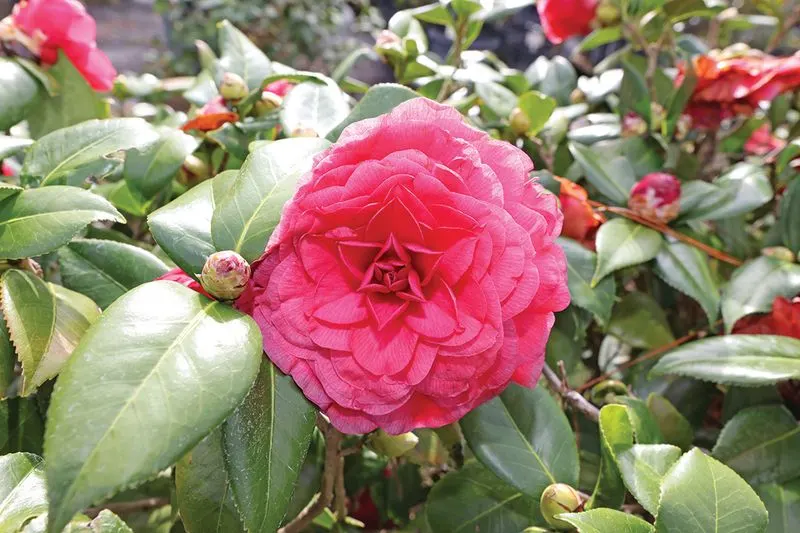
Camellias graced 1950s gardens with their exquisite blooms and glossy evergreen leaves. These shrubs were synonymous with southern elegance, often found in gardens looking to add classic beauty. Flowering in late winter to spring, camellias provided much-needed color during colder months. Gardeners cherished them for their durability and adaptability to different conditions. The charm of camellias lay in their variety of forms and colors, making them a versatile choice for landscape design. Their presence reflected the era’s love for perennial beauty and the pursuit of garden sophistication.
Daylilies
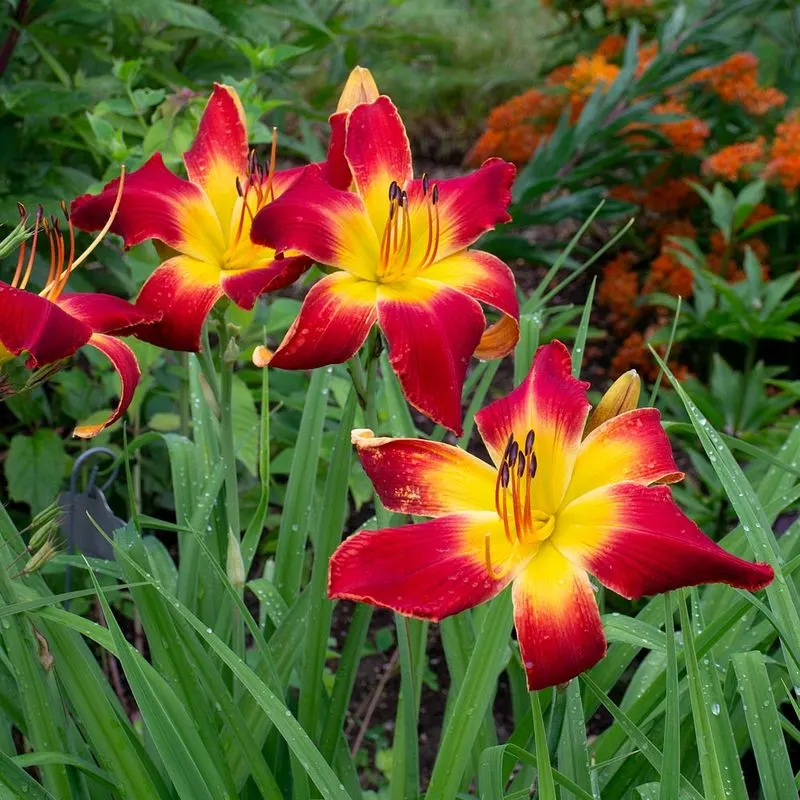
Daylilies brightened 1950s gardens with their vibrant blooms and resilience. These perennials were favored for their adaptability and ease of growth, thriving in various soil conditions. Each flower lasted only a day, but the plants produced blooms continuously, ensuring a lively display. Gardeners valued daylilies for their ability to transform spaces with minimal effort. Their diverse colors and forms allowed for creative garden layouts. The presence of daylilies reflected the era’s appreciation for reliable beauty and practicality. These plants became symbolic of the everyday gardener’s triumph and creativity.
Sweet Peas
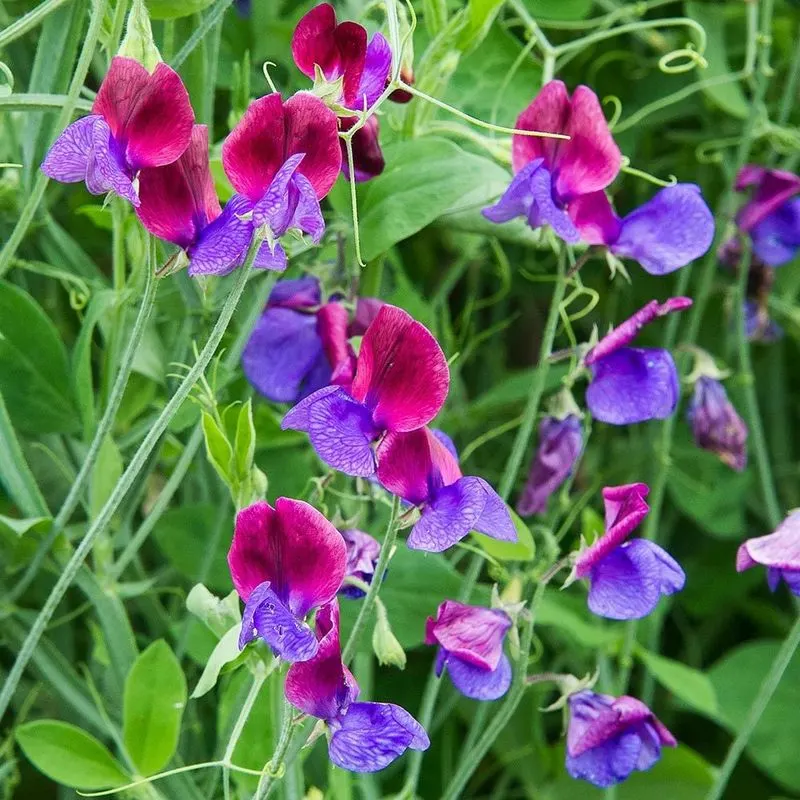
Sweet peas charmed 1950s gardeners with their fragrant, colorful blossoms. These annual climbers were ideal for creating vertical interest, often training up trellises or fences. Known for their delicate petals and sweet aroma, sweet peas added a romantic touch to gardens. Gardeners enjoyed selecting from a variety of hues to match their desired aesthetic. The effort to grow sweet peas was rewarded with abundant blooms, perfect for cut flower displays. Their presence symbolized the decade’s embrace of ornamental beauty and the simple joys of garden creativity.
Lavender
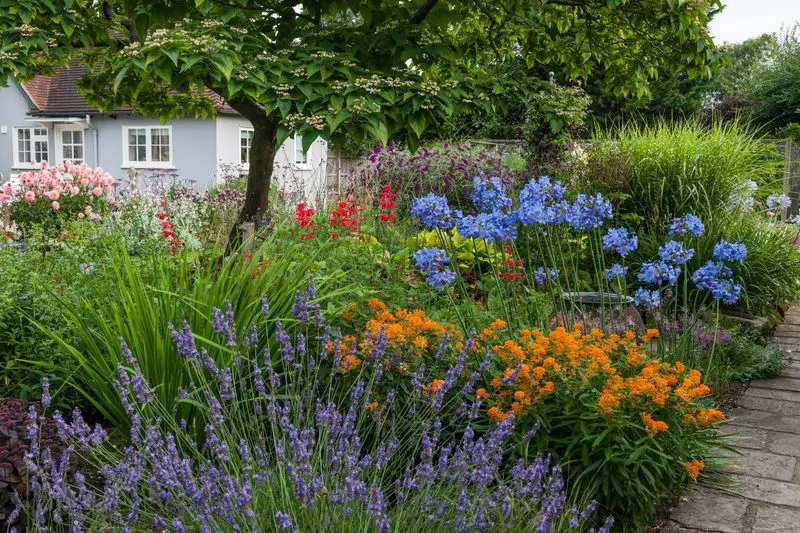
Lavender infused 1950s gardens with its calming fragrance and serene purple hues. This herb was not only valued for its aromatic appeal but also for its versatility in culinary and craft uses. Gardeners appreciated lavender’s drought tolerance and low maintenance needs, making it a practical choice for sunny spots. Often planted in rows or borders, it created a soothing atmosphere, attracting pollinators. The plant’s presence echoed the decade’s trend of incorporating multifunctional and ornamental plants into gardens. Lavender became a symbol of peace and simplicity, enhancing garden experiences with its gentle charm.
Marigolds
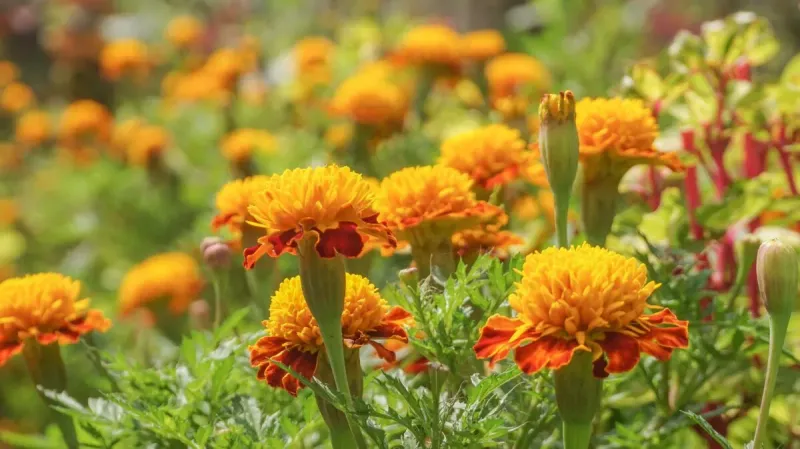
Marigolds brightened 1950s gardens with their vibrant colors and pest-repelling properties. These hardy annuals were favored for their reliability and easy cultivation, thriving in various conditions. Planted as companion plants, they helped protect crops from pests, embodying a practical gardening approach. The cheerful blossoms added visual interest, often used in borders or as fillers in garden beds. Gardeners valued marigolds for their long blooming season and minimal care requirements. Their presence in gardens mirrored the era’s emphasis on practical beauty and resourcefulness, making them a beloved choice for both new and experienced gardeners.
Fuchsias
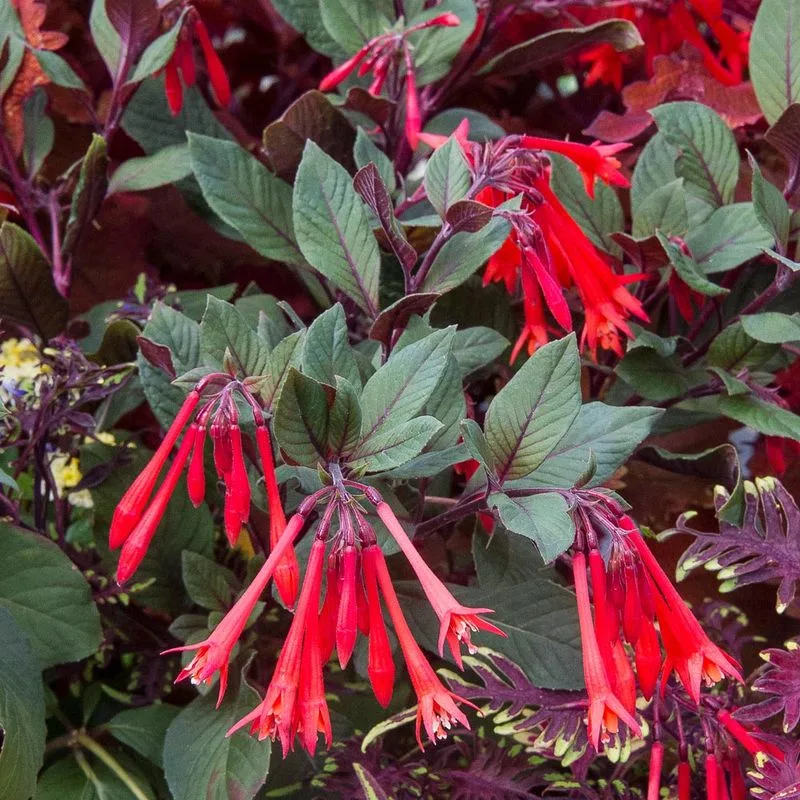
Fuchsias enchanted 1950s gardeners with their delicate, pendulous blooms and vibrant colors. These shade-loving plants were ideal for hanging baskets or containers, adding vertical interest to gardens. The unique shape of fuchsia flowers attracted hummingbirds, bringing life and movement to outdoor spaces. Gardeners enjoyed experimenting with different varieties, appreciating the plant’s versatility and dramatic impact. Fuchsias symbolized the creativity and playfulness of the decade’s garden trends, offering a splash of color and charm. Their presence in gardens was a testament to the era’s fascination with exotic and visually striking plants.
Snapdragons
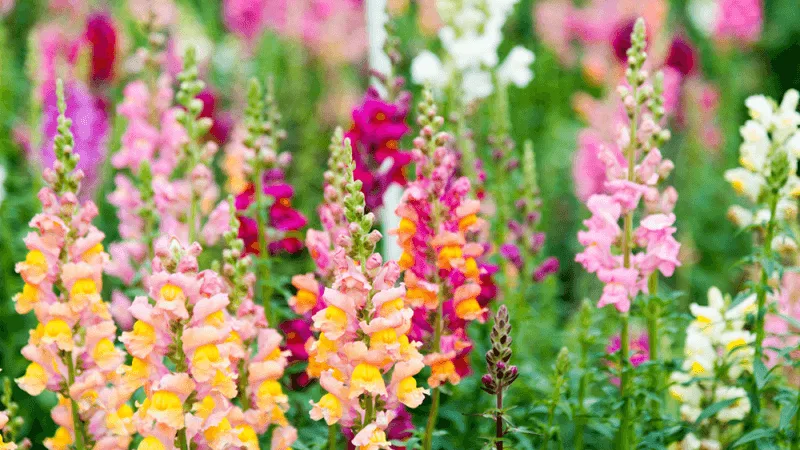
Snapdragons added whimsy and color to 1950s gardens with their distinctive blooms. These annuals were known for their tall spikes of flowers, providing vertical interest in garden beds. The wide range of colors and patterns allowed gardeners to customize their flower displays. Snapdragons thrived in sunny spots and required minimal maintenance, making them a popular choice for busy households. Their playful appearance and ease of growth captured the spirit of the decade, blending practicality with beauty. The presence of snapdragons in gardens reflected the era’s embrace of vibrant, cheerful aesthetics.
Geraniums
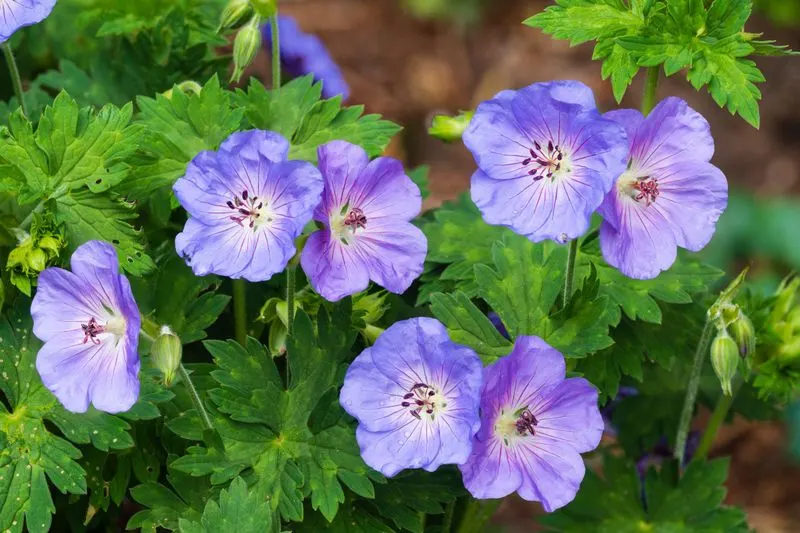
Geraniums brought color and fragrance to 1950s homes and gardens alike. These versatile plants thrived in pots or garden beds, making them ideal for both indoor and outdoor settings. Gardeners appreciated their ease of care and ability to bloom continuously with minimal effort. The vibrant flowers and aromatic leaves made geraniums a popular choice for enhancing living spaces. They were often used to brighten up windowsills or patios, embodying the decade’s love for accessible beauty. Geraniums symbolized the merging of indoor and outdoor life, creating a harmonious link between nature and home aesthetics.

